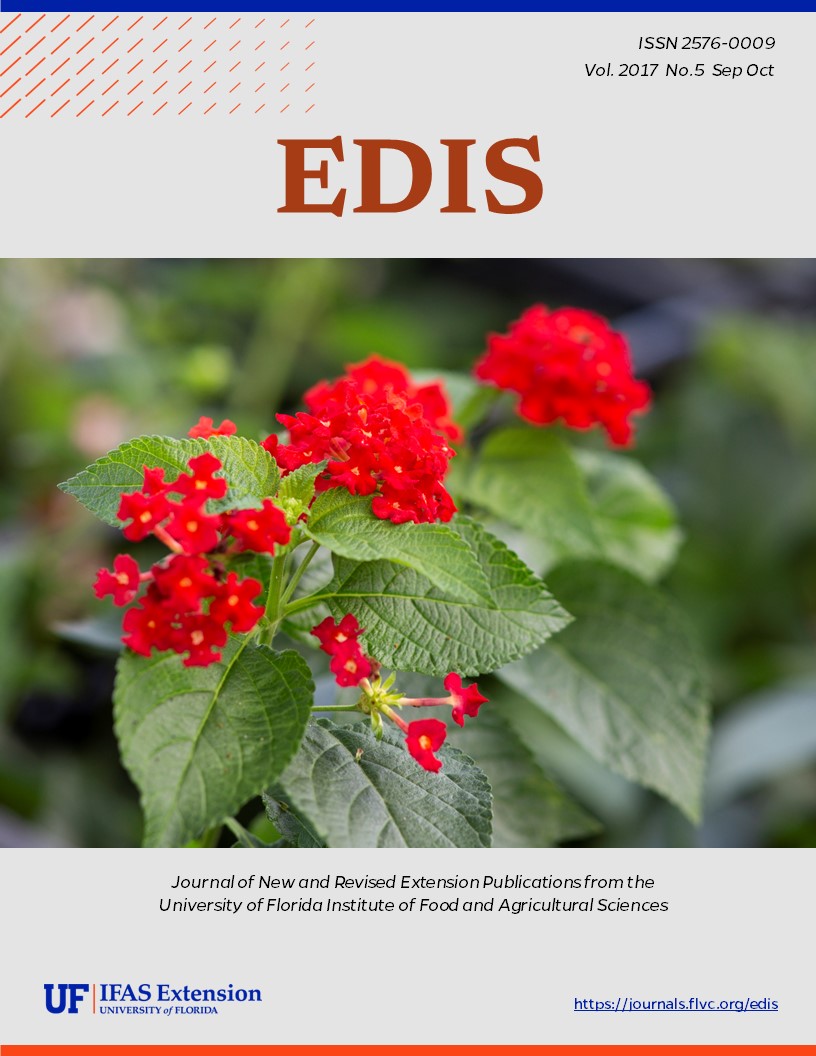Resumen
This article highlights the importance of raising soil organic matter in sandy and calcareous soils as it relates to increasing the water holding capacity of the soil. Farming in Florida on sandy soils has numerous limiting factors; one of which is it's low water holding capacity. By raising the soil organic matter content by just 1% can have a significant increase in soil water holding capacity. This would mean that soil would be able to hold more water for long durations. The prospect of increasiong water holding capacity in soils is great for agricultural productivity, and can have a significant impact on water conservation and usage.
Citas
Ashworth, A.J., F.L. Allen, A.M. Saxton, and D.D. Tyler. 2017. "Impact of crop rotations and soil amendments on long-term no-tilled soybean yield." Agronomy Journal. 109: 938-946. https://doi.org/10.2134/agronj2016.04.0224
Barzegar A.R., A. Yousefi, and A. Daryashenas. 2002. "The effect of addition of different amounts and types of organic materials on soil physical properties and yield of wheat." Plant and Soil. 247: 295-301. https://doi.org/10.1023/A:1021561628045
Borisova T., N. Breuer, and R. Carriker. 2014. Economic Impacts of Climate Change on Florida: Estimates from Two Studies. FE-787. Gainesville: University of Florida Institute of Food and Agricultural Sciences. edis.ifas.ufl.edu/FE787
Bryant, L. 2015. "Organic Matter Can Improve Your Soil's Water Holding Capacity." NRDC Expert Blog. https://www.nrdc.org/experts/lara-bryant/organic-matter-can-improve-your-soils-water-holding-capacity
Doran, J.W., and M.R. Zeiss. 2000. "Soil health and sustainability: managing the biotic component of soil quality." Applied Soil Ecology. 15: 3-11. https://doi.org/10.1016/S0929-1393(00)00067-6
Gomez, S.M. 2013. Recycling agricultural by-products to grow sugarcane on sandy soils in South Florida. MS Thesis. University of Florida.
Hudson, B.D. 1994. "Soil organic matter and available water capacity." Journal of Soil and Water Conservation. 49: 189-194.
Jenkinson, D.S., and D.S. Powlson. 1976. "Effects of biocidal treatments on metabolism in soil-V: A method for measuring soil biomass." Soil Biology and Biochemistry. 8: 209-213. https://doi.org/10.1016/0038-0717(76)90005-5
Nichols, R. 2015. "A Hedge against Drought: Why Healthy Soil is 'Water in the Bank'." United States Department of Agriculture. Natural Resources Conservation Service. https://www.usda.gov/media/blog/2015/05/12/hedge-against-drought-why-healthy-soil-water-bank
Rijsberman, F.R. 2006. "Water scarcity: Fact or fiction?" Agricultural Water Management.80: 5-22. https://doi.org/10.1016/j.agwat.2005.07.001
Rokai, F.M., L.E. Baucum, R.W. Rice, and J. Alvarez. 2010. "Comparing costs and return for sugarcane production on sand and muck soils of Southern Florida, 2008-2009." Journal American Society of Sugarcane Technologist. 30: 50-66.
Steenwerth, K., and K.M. Belina. 2008. "Cover crops enhance soil organic matter, carbon dynamics and microbiological function in a vineyard agroecosystem." Applied Soil Ecology. 40: 359-369. https://doi.org/10.1016/j.apsoil.2008.06.006
Taiz, L. 2013. "Agriculture, plant physiology, and human population growth: past, present, and future." Theoretical and Experimental Plant Physiology. 25: 167-181. https://doi.org/10.1590/S2197-00252013000300001
Wang, Q., Y. Li, E.A. Hanlon, W. Klassen, T. Olzcyk, and I.V. Ezenwa. 2015. Cover Crop Benefits for South Florida Commercial Vegetable Producers. SL-242. Gainesville: University of Florida Institute of Food and Agricultural Sciences. edis.ifas.ufl.edu/SS461
Unless otherwise specified, articles published in the EDIS journal after January 1, 2024 are licensed under a Creative Commons Attribution-NonCommercial-NoDerivs 4.0 International (CC BY-NC-ND 4.0) license.

